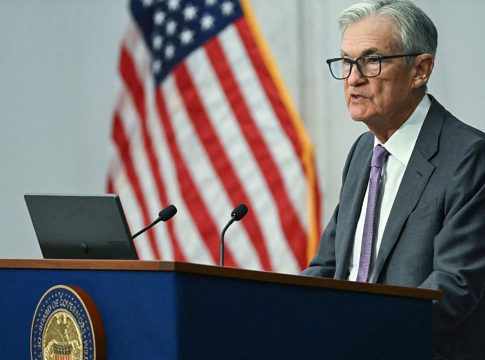Understanding the Fed’s Latest Forecast on Inflation and Economic Growth
In a recent conference marking the 75th anniversary of the Federal Reserve’s International Finance Division, Chair Jerome Powell addressed significant shifts in the U.S. economic landscape. With rising inflation expectations and uncertainties tied to trade policies, the conversation is more vital than ever for consumers and investors alike.
Inflation on the Rise
The Federal Reserve anticipates inflation will exceed 3% this year. This update comes as central bank officials examine how ongoing trade tensions, particularly those associated with current tariffs, might impact consumer prices.
- Current Stats: In April, the Core Personal Consumption Expenditures (PCE) price index, a key measure that excludes volatile food and energy prices, was settled at 2.5%. However, Fed officials now predict a rise to 3.1%, up from an earlier estimate of 2.8%.
- Consumer Impact: Powell emphasized that tariffs often lead to increased prices for consumers. As manufacturers and retailers face squeezed margins from tariffs, those costs are likely to be passed along—landing squarely on everyday shoppers’ shoulders.
Economic Growth Concerns
In addition to inflation worries, the Fed has downgraded its growth forecasts. Economic growth is expected to slow down to just 1.4% this year, a slight dip from March’s estimate of 1.7%.
- What does this mean for you? Slower economic growth typically results in less disposable income for families and can impact job stability. If businesses aren’t expanding, hiring may stall.
Interest Rates in Focus
Despite rising inflation and slower growth, the Fed is cautious about reducing interest rates. Concerns around trade policies and geopolitical instability—particularly the tensions involving Iran—have policymakers wary of easing too quickly.
- Future Rate Predictions: According to the Fed’s dot plot, which expresses individual members’ rate preferences, the benchmark lending rate could drop to 3.9% by late 2025. This suggests that consumers may see rate cuts come in the next few months, but not all members are on board; seven out of 19 Fed participants wish to hold steady this year.
Key Takeaways
-
Watch Inflation: Keep an eye on price changes, especially for essential goods. Higher inflation can eat away at your purchasing power.
-
Plan for Slow Growth: With growth slowing, it may be prudent to reassess your budget and spending habits. Prioritize necessary expenses and consider saving more.
- Interest Rate Trends: If rates do drop later, it might be an opportune time for those considering loans or refinancing existing ones.
Conclusion
Amid fluctuating inflation and growth forecasts, the Federal Reserve is navigating a complex economic scenario influenced by tariffs and global tensions. For everyday consumers, understanding these dynamics can help you make informed financial decisions. Stay alert to these developments, as they could significantly impact your wallet in the months ahead.

Writes about personal finance, side hustles, gadgets, and tech innovation.
Bio: Priya specializes in making complex financial and tech topics easy to digest, with experience in fintech and consumer reviews.

